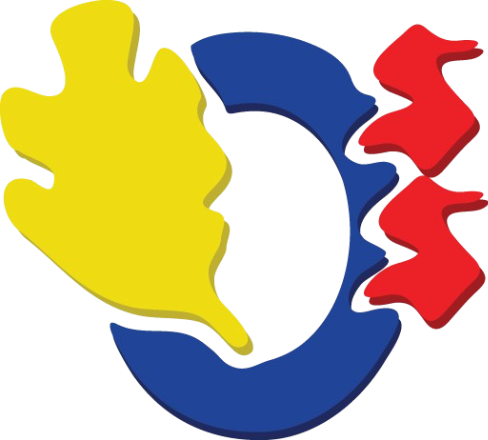Organelles and Cell Specialization
Phospholipid Bilayer – Structure and Function
- Phospholipid bilayer: Forms spontaneously from amphipathic phospholipids
- Amphipathic: Molecules with both hydrophilic heads and hydrophobic tails
Key Components
- Allows bilayer formation: hydrophilic heads face water; hydrophobic tails form inner barrier
- Creates a selective barrier for transport
Function of Amphipathic Nature
- Semi-permeable: Controls what enters/leaves the cell
- Selectively permeable:
- Small, nonpolar molecules pass freely
- Polar/large molecules need assistance
Functions of the Lipid Bilayer
- Maintains compartmentalization (organelles)
Importance in Eukaryotic Cells
- Lipids move laterally → membrane adapts, repairs, and divides
- Cholesterol:
- Reduces fluidity in heat
- Prevents stiffness in cold
- Stabilizes the membrane
Fluidity of the Bilayer
- Hydrophobic core repels water, ions, and large polar molecules
Barrier Effectiveness
- Ions (e.g. Na⁺, Cl⁻)
- Polar molecules (e.g. glucose)
- Large macromolecules (e.g. proteins)
Substances That Cannot Cross Easily
Membrane Proteins and Carbohydrates
- Located on extracellular side
- Roles:
- Cell recognition
- Signaling
- Adhesion (e.g. sperm binding, immune response)
- Organ transplants: Crucial for identifying compatible tissue
Glycoproteins and Glycolipids

- Junctions – Connect adjacent cells
- Enzymes – Catalyze reactions
- Transport – Move substances across membrane
- Recognition – Cell identity markers
- Anchorage – Attach to cytoskeleton
- Transduction – Receive signals (e.g., hormones)
Membrane Proteins (Functions - JET RAT)
- Integral proteins:
- Span the bilayer
- Hydrophobic regions interact with membrane core
- Peripheral proteins:
- Loosely attached to surface or integral proteins
- Temporary and dynamic
Types of Membrane Proteins
Fluid Mosaic Model
Explains the membrane’s flexible, dynamic nature.
- 1. Phospholipid bilayer
- 2. Integral proteins
- 3. Peripheral proteins
- 4. Glycoproteins
- 5. Cholesterol
5 Key Components
Passive Transport
- Movement: High → Low concentration
- No energy (ATP) needed
- Features:
- Selectively permeable membrane
- Concentration-gradient driven
- Example: Oxygen diffusing into a cell
1. Simple Diffusion
- Uses channel or carrier proteins
- Still passive – no ATP needed
- Moves particles down the concentration gradient
- Channel proteins:
- Form specific pores for ions/molecules
- Faster than simple diffusion
- Carrier proteins:
- Bind particles → change shape → release particle inside cell
2. Facilitated Diffusion
3. Comparison
| Simple Diffusion | Facilitated Diffusion | |
|---|---|---|
| Uses proteins? | No | Yes (channel or carrier) |
| Energy required? | No | No |
| Particle type | Small and nonpolar | Large or polar |
Osmosis
- Movement of water from low solute → high solute across a semi-permeable membrane
Definition
- Water enters vacuole
- Exerts pressure on cell wall
- Keeps plant rigid and upright
Supports Plant Turgor Pressure:
- Hypotonic: High water, low solutes outside → water enters cell (cell swells)
- Isotonic: Equal water and solute concentration inside and outside → no net movement
- Hypertonic: Low water, high solutes outside → water exits cell (cell shrinks)
Osmosis and Solutions
- Maintains turgor pressure in plants
- Regulates cell volume
- Essential for homeostasis in tissues and organs
Importance of Osmosis
Active Transport
- Movement of molecules against concentration gradient
- Requires ATP
- Uses pump proteins
Movement of Molecules
- Maintains concentration gradients
- Enables nutrient absorption, waste removal, and nerve signaling
Importance
- Molecule binds to the pump protein
- ATP causes a shape change
- Molecule is released on the opposite side of the membrane
- Protein resets without more energy
Mechanism
Pump vs. Channel Proteins
| Feature | Pump Proteins | Channel Proteins |
|---|---|---|
| Energy required | Yes (ATP) | No |
| Direction | One-way | Both directions |
| Gradient movement | Against gradient | With gradient |
Organelles

- Compartmentalization increases efficiency and specialization
Importance

- Nucleus: DNA storage and control center
- Ribosomes: Protein synthesis
- Golgi Apparatus: Packages and ships materials
- Lysosomes: Waste breakdown
- Chloroplasts: Photosynthesis (in plants)
Key Organelles and Functions

- Must be membrane-bound
- Must participate in metabolism
- Note: the cytoskeleton, cell wall, and cytoplasm are not organelles
Organelle Criteria
Cell Size Limitations

- Metabolism rate → Depends on volume
- Exchange rate → Depends on surface area
2 Main Factors

- Surface area to volume ratio decreases
- Less efficient exchange
- Large cells divide to survive
As the Cell Grows:

- More small cells = higher total surface area to volume ratio
- Allows for specialization and the division of labor
Why Multicellularity Helps
Cell Differentiation

- Process where unspecialized cells develop into specialized cells
Definition

- All cells retain the same genome
- Gene expression determines specialization
Genetic Control

- Structure supports function
- Example: RBCs have no nucleus + biconcave shape → max oxygen transport
Form and Function
Stem Cells

- Undifferentiated cells that:
- Can divide endlessly
- Can differentiate into other cell types
Definition

- Self-renewal: Reproduce indefinitely
- Potency: Ability to become different cell types
Key Properties

Types of Stem Cells
| Type | Potential |
|---|---|
| Totipotent | All cell types (including embryo + placenta) |
| Pluripotent | Any cell from 3 germ layers |
| Multipotent | Limited related types (e.g. blood, skin) |

- Replace damaged/worn-out cells (e.g. skin, blood)
Roles in Adults
Embryonic vs Adult Stem Cells

- Totipotent and pluripotent
- Differentiation triggered by morphogen gradients (signaling molecules)
Embryonic Stem Cells

- Only multipotent
- Found in bone marrow, hair follicles, etc.
Adult Stem Cells

 Biology
Biology